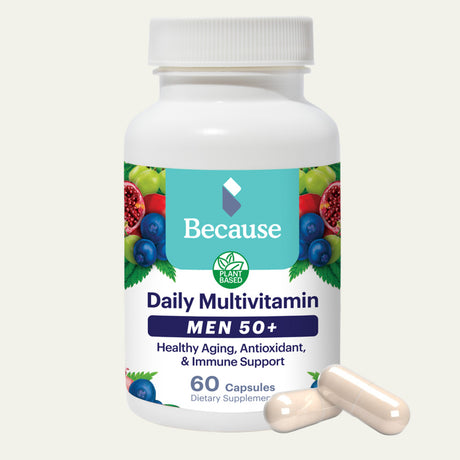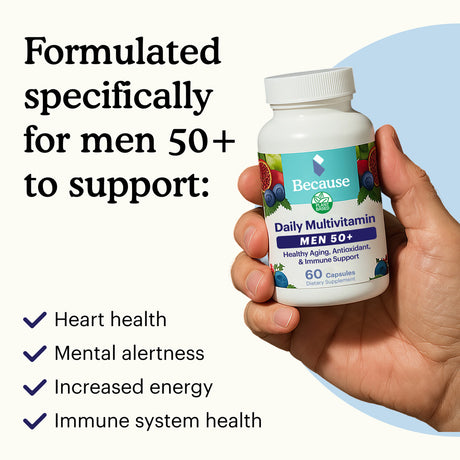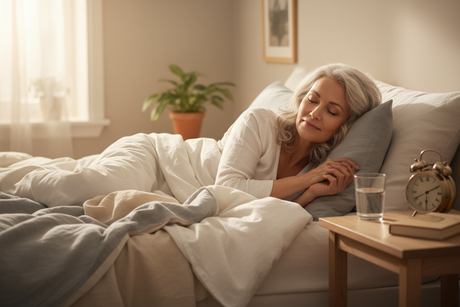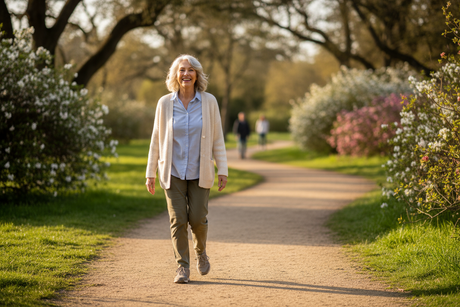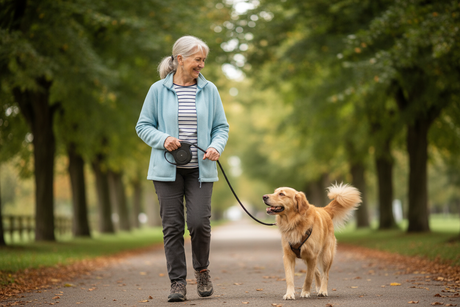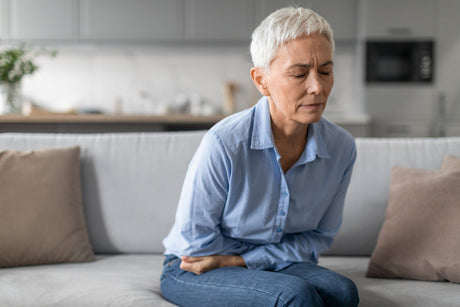Each year, an estimated 450,000 people undergo hip replacement surgery in the U.S. This statistic points to how prevalent problems with the hip muscles and joints are among older adults. If you suffer from hip pain or tight hips, you know firsthand how these problems can interfere with everyday activities, reducing your quality of life. The good news is that physical activity can ease pain and stiffness for many seniors. Getting into a regular stretching routine is one of the best ways to benefit your hips. In this post, we'll share some simple hip flexor stretches that you can incorporate into your workouts.
Why Are Hip Stretches Important for Seniors?
Hip stretches offer numerous benefits for seniors, including:
- Increased circulation: Stretching enhances blood flow to the hips, stimulating healing after injuries. It also supports flexibility.
- Improved mobility: Tight hips can make it difficult to take steps safely. Stretching can increase the range of motion to reduce the risk of falls. This added benefit of stretching is especially important for seniors aging in place.
- Less discomfort: Building up the group of muscles in the hips can increase support for the hip joint, which may reduce hip pain from arthritis.
- Better posture: The hips are essential in helping you maintain good posture. Developing the muscles in the hips can help you stand straighter — lowering the likelihood of neck, shoulder, and lower back pain.
- Enhanced self-esteem: Achieving your goal of regularly stretching can give you a sense of satisfaction. Seeing your strength and flexibility improve over time boosts your self-confidence and self-esteem.
10 Gentle Hip Stretches for Seniors
There are many hip stretches that you can add to your active lifestyle. Some require you to stand, while you can be lying down or in a seated position for others. Here is a roundup of some of our favorites for seniors to try.
1. Low Lunge

Low lunges stretch out the quadricep muscles in the legs while opening up the hip flexors. When performed regularly, this exercise may help older adults increase the flexibility of their hip joints. To give it a try:
- Get down on the floor on your hands and knees.
- Make your back flat by imagining you are creating a tabletop.
- Pull your right leg forward.
- Place your right foot flat on the floor. Position your right knee over your right ankle.
- Press your left foot into the ground to form a firm root.
- Keep your spine straight and lift your chest, putting your hands on the ground beside you for support.
- Hold for 10 seconds.
- Step your right foot back and get back into your tabletop starting position.
- Pull your left leg forward.
- Place your left foot flat on the floor. Position your left knee over your left ankle.
- Press your right foot into the ground to stabilize yourself.
- Keep your spine straight and lift your upper body. Use your hands on the ground to support yourself.
- Hold for 10 seconds.
If this is too difficult, you can use the seat of a chair to support the front leg while resting your hand or arm on the chair for added support.
2. Cobra Stretch
If you have tight hip flexors, this gentle stretch inspired by yoga practice may be an excellent way to promote hip mobility. To do it:
- Lie on the floor or a bed face down.
- Make your body as long as possible by straightening your back and pointing your toes.
- Position your hands beneath your shoulders.
- Press upward and lift your upper body off the floor or bed while keeping your lower body against it.
- Continue lifting until you feel a stretch in your hips.
- Hold for 10 seconds. Take deep breaths while you hold the pose.
- Slowly lower yourself back down.
- Repeat one or two times if you wish.
3. Knee to Chest
This gentle stretch promotes a fuller range of motion by strengthening the psoas muscles located in the lower back extending across the pelvis to the femurs in your legs. Not only are the psoas muscles essential for hip joint function, but they also play a role in helping you maintain your posture. Give it a try by following these steps:
- Lie down on your back on the floor or on a bed.
- Draw your right knee into your chest.
- Wrap your arms around the knee and pull gently.
- Slowly drop your right knee toward your left side. Continue until you feel the stretch in your hip.
- Hold for 10 seconds.
- Slowly return your right knee to the center and then release it.
- Draw your left knee into your chest.
- Wrap your arms around it and give a gentle pull.
- Slowly drop your left knee toward your right side, moving until you feel the stretch in your hip.
- Slowly return our left knee to the center and then release it.
At first, you may only be able to pull your knee into your chest. If this proves difficult, eliminate the twist in steps 4 and 9. As you continue practicing your hip exercises, you will likely build up the flexibility to incorporate the twist in the future.
4. Clam Exercise
The clam exercise is one to try if you're looking for simple hip stretches ideal for beginners. Not only is it easy, but it also targets the hip flexor muscles solely for more pronounced benefits. Here's how to do it.
- Lie on the floor on your right side.
- Tuck your arm under your head or place a pillow under your head.
- Bend your knees so that they're at a 90° angle.
- Lift your left knee while keeping your ankles together. Employ your glute muscles to intensify the hip stretch.
- Hold your left knee as high as you can for 5 seconds while breathing deeply.
- Slowly lower your knee.
- Repeat five times.
- Change sides so you're lying on your left side with your knees bent.
- Lift your right knee while keeping your ankles together, engaging your glutes.
- Hold your right knee as high as you can for 5 seconds while taking deep breaths.
- Slowly lower your knee.
- Repeat five times.
5. Standing Hip Flexor

This exercise can ease muscle tightness in the hips while strengthening the muscle tissue through the hip flexors for additional benefits. To practice it:
- Stand upright facing a chair, wall, or another sturdy surface.
- Breathe in and lift your left leg off the floor.
- Bring your left knee as close to your chest as possible while using your hands to balance yourself.
- Hold your left leg in the air for five seconds.
- Slowly lower your left leg to the start position.
- Lift your right leg off the floor while you breathe in.
- Bring your right knee as close to your chest as possible, maintaining balance with your hand.
- Hold your right leg in the air for five seconds.
- Slowly lower your right leg to the start position.
- Repeat ten times.
As you build strength, you can increase the difficulty of this hip exercise by wearing ankle weights.
6. Hip Extensions
The hip extension exercise is ideal for many beginners striving to increase mobility by lengthening and strengthening their hip flexors. To add this stretch to your workouts, follow these steps:
- Stand with your feet shoulder-width apart.
- Rest your hands on the back of a chair or the wall.
- Lift your right leg behind you while keeping your left foot on the ground. Focus on keeping both legs straight while they pull in different directions.
- Continue to lift only to the point where you feel the stretch. Hold for 5 seconds.
- Slowly lower your right foot to the floor and retake the starting position.
- Lift your left leg behind you, keeping your right foot on the ground and both legs straight.
- Stretch until you feel the pull, and hold for five seconds.
- Slowly lower your left leg to the ground.
- Repeat five to 10 times.
You can add ankle weights to increase the difficulty as you develop strong glutes, hips, and legs.
7. Hip Circles
Hip circles are fun stretching exercises because they feel like dancing. They're a good idea if you're experiencing tightness through the hip area and want to strengthen your abs and lower back. To do them:
- Stand with your feet slightly wider than shoulder width.
- Bend your knees slightly.
- Put your hands on your hips.
- Jut your right hip outward, then rotate your hips, imagining that you're using them to draw a circle.
- Continue rotating 360 degrees.
- Jut your left hip outward and rotate fully in the other direction.
- Repeat 5 to 10 times.
8. Seated Dancer’s Pose
This stretch may help ease mobility issues by working your hips, glutes, and legs. To do it, follow these steps:
- Sit on the edge of an armless chair.
- Bend your knees at a 90° angle with both feet flat on the floor.
- Shift yourself to the left, so your left leg hangs off the side.
- Lean back, pressing your upper back against the chair.
- Let your left arm hang by your side.
- Move your left foot back so you can cradle the top of it in your left hand.
- Hold for five seconds, breathing deeply.
- Slowly return your left foot to the floor while sliding your body to the center of the chair.
- Shift yourself to the right, so your right leg is off to the side.
- Lean back against the chair and allow your right arm to hang loosely.
- Move your right foot back and hold it with your right hand.
- Hold for five seconds, breathing deeply.
- Return to your starting position.
9. Hip Marches
With this beginners' exercise, you can enhance hip flexibility and build hip and leg strength at the same time. Here's how to do it:
- Sit in a chair with a tall back.
- Put your feet flat on the floor and rest your hands lightly on your knees or legs.
- Lift your left knee as high as you can, keeping it bent. Breathe in while you move.
- Lower your left leg to the floor and raise your right knee as high as possible. Remember to breathe.
- Lower your right foot to the floor.
- Repeat ten times, trying to move in a steady marching motion.
Adding ankle weights is an easy way to make this exercise more challenging as you develop more strength.
10. Figure Four Stretch

By helping to enhance your range of motion, this gentle stretch can make it easier for you to perform your daily tasks. To do it:
- Lie on your back on the floor or on a bed.
- Bend your right knee, placing your right foot flat on the floor or bed.
- Lift your left leg and rest your left ankle on your right knee.
- Lace your fingers behind your right hamstring.
- Lift the right foot off the floor or bed as high as possible without experiencing hip or lower back pain. Keep your right foot on the floor if you find this stretch difficult.
- Hold for 10 seconds while breathing deeply.
- Release your left leg and lower your right foot.
- Straighten out both legs.
- Bend your left knee, placing your left foot flat on the floor or bed.
- Lift your right leg and rest your right ankle on your left knee.
- Lift your left foot as high as you can, keeping your left foot on the floor if too difficult.
- Breathe deeply while you hold for 10 seconds.
- Lower your right foot and release your left leg.
Tips for Performing Hip Stretches Safely
Exercising safely is important at any age but is especially crucial for seniors who may be more at risk for injuries and typically take longer to heal when they occur. To stay safe while you stretch, follow these tips:
Talk to Your Doctor

The above stretches are general suggestions; some may not be ideal for seniors. Before starting any new exercise program, talk to your doctor. They can determine if you have health conditions or concerns that may make certain stretches unsafe. They can help you decide if you might benefit from seeing a physical therapist for hip problems or recommend you to start using some of the daily living aids.
Start Slowly
Don't worry if you can't hold a stretch for as long as recommended or if you can't lift your leg or bend very far at first. Work to your ability level and strive to go for longer or increase your movement's size over time. Doing so can help you avoid injury.
Separate Discomfort from Pain
It's normal for stretching to feel uncomfortable. You may experience a tugging or burning sensation as you work out muscles you don’t use as often. What you shouldn't feel is a sharp, stabbing pain. If you do, ease up on the stretch. If the pain still doesn't resolve, avoid that activity until you talk to your doctor.
Dress Appropriately
Choose clothing that enables you to move freely, such as loose garments or apparel made of stretchy fabrics. Wear sneakers with good treads when performing standing exercises to avoid slipping and sliding. Avoid wearing jewelry, which could get caught while you move or scratch your skin during stretches.
Use a Spotter at First
Making sure that you can safely perform hip stretches can help prevent injuries that could result in further physical set backs. Have a caregiver or family member close by during your first stretching sessions. As you build up strength and flexibility, you may eventually exercise alone. Using daily living aids like a sturdy quad cane may also be helpful to provide additional stability. If you're building up strength to go for longer walks, using a spotter to help acclimate you to a rollator walker can also help you feel confident and ready to take on more independently.
How Often Should You Perform Hip Stretches?
Hip stretches should become part of your daily activities, like pelvic floor exercises for incontinence. You don't need to do these every day right from the start. Set a simple goal to do your hip stretches two to three times per week. Once you achieve your goal, add another day until you’re stretching daily.
If joint pain limits your ability to do physical activities, Because Joint Supplement may help with its blend of turmeric, glucosamine, and chondroitin that eases discomfort and stiffness while supporting overall joint health.
Sources:
American College of Rheumatology. (n.d.). Joint Replacement Surgery. https://www.rheumatology.org/I-Am-A/Patient-Caregiver/Treatments/Joint-Replacement-Surgery

